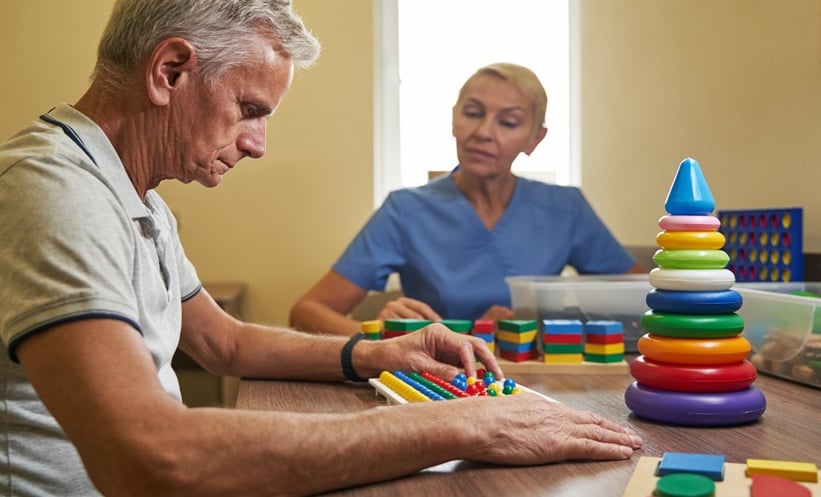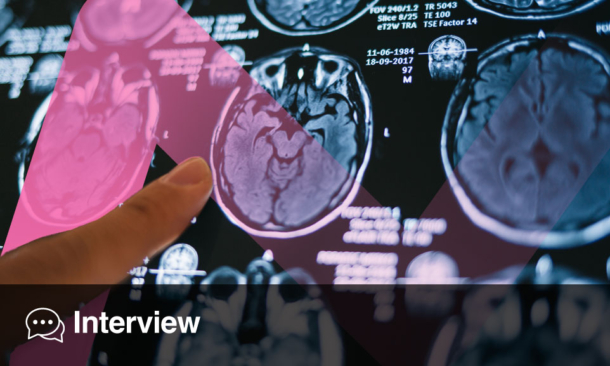Kailash Bhatia | Professor of Clinical Neurology, University College London, UK
Citation: EMJ Neurol. 2024;12[1]:87-91. https://doi.org/10.33590/emjneurol/OQTK4581.
![]()
What initially sparked your interest in Neurology, and what motivated you to pursue training in neurogenetics and movement disorders with the late Professor’s Anita Harding and David Marsden?
I completed my neurology training in Mumbai, India. At the end of my general medical degree, I was influenced by a top-rate neurologist in Mumbai, Noshir Wadia. Wadia was studying a particular form of spinocerebellar ataxia in what turned out to be spinocerebellar ataxia Type 2. However, at that time, it was a mystery disease that afflicted young adults with cerebellar ataxia, who presented with the classic slow eye movements. I found that fascinating, so I decided to take up neurology training.
After completing my neurology training, I worked with Wadia because I felt incomplete and unprepared to go into practice. My father wanted me to do so because we were middle class; he told me: “Why do you not start practising and earn some money?” But I wanted to explore research. With this in mind, I returned to Wadia and published a paper with him on multiple sclerosis in a top-rated journal, which was a rare feat, and usually there were only a few papers from India. However, my idea was to learn more about neurogenetics. Since he wanted clarification on ataxias and Anita Harding was the ataxia expert at Queen Square in London, UK, also working on genetics, I came to work with Harding. It was while working with her that I met David Marsden, who could be considered as the founder of the new field of movement disorders within neurology. I would attend Marsden’s famous book round and he took to me, and I became his research fellow. Eventually, I became a lecturer, then a senior lecturer, and finally a professor at Queen Square. I was very lucky to have incredible mentorship from Wadia to Harding, who really influenced me. Moreover, it was an exciting time in movement disorders. It was a relatively new field, and I was able to publish a lot with Masden even as a young fellow. I believe one has to be lucky and although many of my life decisions were by serendipity, one must take the opportunities that come their way and run with them.
You currently have more than 600 peer-reviewed publications to your name for your research in neurology and movement disorders. What do you believe to be the current gaps in research in regard to dystonia and Parkinson’s disease?
One of the significant issues with dystonia is that it is like an orphan condition. If you mention dystonia to somebody, people are likely to wonder whether you are referring to a foreign country. It is not present in the public domain or even in the general practice domain, so most people do not know about dystonia. However, the most common form of dystonia is idiopathic cranial cervical dystonia, and many fundamental questions are unanswered. The disorder mainly afflicts women, particularly those aged 50–70 years. The cranio–cervical region is predominantly affected, it does not spread and go anywhere else; and if you have torticollis, it is usually the head turn to the left. There are simple questions that need to be addressed. Why is it predominantly in women? Why at that age? Why to the left? We do not have answers, and though we have treatments like deep brain stimulation, we do not understand the basic pathophysiology of dystonia. This lack of understanding of the pathophysiology is why we do not have curative treatments. One of the problems, especially, is that it is challenging to get funding for research into dystonia. People do not recognise dystonia as an important neurological disorder which afflicts many people and affects their quality of life in a major way.
Parkinson’s disease is a fascinating area I have become increasingly interested in. There are numerous different aspects one would consider as being problematic. There is a considerable amount of genetic research for Parkinson’s disease that has helped us understand the pathophysiology of the disease. The discovery of alpha-synuclein was a monumental event, but if you look overall at the genetic causes of Parkinson’s, monogenic forms represent 2% or fewer cases. There are, of course, risk factor genes that might contribute an additional 7% in prevalence, but a large proportion of patients have idiopathic disease with no genetic cause.
That brings us to the question about the environment. There is a large gap in understanding the environmental causes of Parkinson’s disease. Although there are suggestions that pesticides, well water, and similar environmental factors contribute to Parkinson’s disease risk, we do not have good studies looking at the environmental factors as the primary or maybe the adjunctive cause of Parkinson’s. How does the environment play a role? Furthermore, it is interesting that Parkinson’s is only seen in humans, and there is no natural model for it in animals. We share the vast majority of our genetic makeup with higher apes, but they do not develop Parkinson’s. It is a human disease. What is it with Parkinson’s disease that means it afflicts humans only?
The two important aspects for me are considering the contribution of ageing and the environment. We are spending considerable effort examining the genetics, and pathophysiological mechanisms from the genetics, but we need to pay more attention to these other factors. Additionally, another area that requires more attention is disease modification. We have been successful with symptomatic drugs and surgical options like deep brain stimulation, but methods for disease modification, slowing down or changing the course of disease progression are still absent. There are some promising developments in disease modification, but we need to do better. Finally, researchers and clinicians primarily discuss Parkinson’s disease from the motor perspective, and available treatments target motor symptoms. Nevertheless, the quality of life and the non-motor problems later in life, including cognitive problems with apathy, anxiety, fatigue, and so on, are understudied. There needs to be more research to understand the non-motor side of Parkinson’s disease.
In the recently published article you co-authored entitled ‘Plasma proteomics identify biomarkers predicting Parkinson’s disease up to 7 years before symptom onset’, what were the key findings and what are their impact?
Before I discuss the key findings and the impact, I want to discuss the background of the study. Kevin Mills is an extremely bright academic at the University College of London Institute of Child Health in the UK, and we work together on several projects. One of the projects that we are collaborating on is funded by a European Union (EU) grant, called Propagageing, looking at ageing and Parkinson’s disease. While working together I told him that it would be of great interest if he could use his high-performing liquid chromatography technology to identify a signature of Parkinson’s in the blood. There are several assays utilising cerebrospinal fluid and methods such as real-time quaking-induced conversion (RT-QuIC) for the blood that are becoming more accurate diagnostic tests. However, the question that we asked ourselves is, can we look at the difference in the protein makeup in the blood using a very detailed proteomic analysis to identify a signature for Parkinson’s disease that is different from healthy controls? If we could do that, would it be possible to look at patients with REM sleep behaviour disorder (RBD), which we know is a common prodromal symptom of several synucleinopathies, and ask who would go on to develop Parkinson’s?
The problem we faced was that we did not have samples from patients with RBD. This is where Brit Mollenhauer, University Medical Center Goettingen, Germany and her team came into the story because they had samples of people with well-defined RBD. We had the initial phase where we took a small number of patients with Parkinson’s disease compared to controls, and we had a very large number of proteins from that. Using machine learning, we were able to identify eight proteins from the dataset that could be used as a predictor signature of Parkinson’s disease in the blood. We applied this identified signature to the RBD cohort provided to us by Mollenhauer, and we found an overlap, which allowed us to accurately predict those in the RBD cohort who went on to develop Parkinson’s disease. The reason why the findings may be useful is because RT-QuIC and seeding assays are difficult to apply globally, while most hospitals in the UK and worldwide have high-performance liquid chromatography and can use this discovery to validate our signature and use it as a Parkinson’s disease marker. This finding has been exciting, and though the results require validation, the study is robust and was extremely well done.
What are the implications of these findings for the use of machine learning in the identification of biomarkers and drug targets for Parkinson’s disease and other disorders?
The power of machine learning lies in large datasets. This study is a good example of where you start with 1,280 proteins and then use an AI-driven methodology, looking at the functions of these proteins, for example, to be able to narrow down which may be important from a pathophysiological perspective. AI will drive our understanding of large datasets in a more meaningful way, whether that is applied in proteomics or genetics. At the moment, we are putting together very large datasets by combining clinical data, radiological or imaging data, and proteomics and metabolomics on a large dataset, we are then applying AI to see if there is a difference in patients that progress to Parkinson’s disease, multiple system atrophy, or progressive supranuclear palsy. Utilising AI for this type of analysis is going to be very powerful and will provide us with a lot of information.
You have recently been appointed as President-Elect of the European Academy of Neurology (EAN), and have stated that you plan to “support the core values of the EAN in promoting education, science, advocacy, and membership.” With this in mind, what is your vision for the future of EAN?
Firstly, I am delighted, honoured, privileged, and humbled to be resoundingly elected for this position. The European Academy of Neurology (EAN) is a growing organisation. At the EAN 2024 Congress, there were 7,000 in-person attendees and another 2,000 online, so we had an audience of nearly 10,000, which is a huge meeting and a momentous accomplishment. My view is that there should be a level playing field across all areas. For example, with the discoveries that we have discussed, there should not be a two-tier or three-tier system coming in because some countries can have access to the latest investigations, while other countries in Eastern Europe, particularly, may not have the same access. The idea is that education and information should be available equally to everybody and that is an important consideration for me. Everyone must have equal opportunities irrespective of gender, race, nationality, and other characteristics.
I want to foster and help young people come up, ensuring that they have a voice and are represented. These are not just words, and I mean what I say. As a professor, I have trained 86 fellows from 22 different countries, and many of them are leaders in their own right. You must give young people opportunities, whether that is being able to present at meetings or whether that is the question of education being available to everybody, so that everyone is aware of new findings happening in the world. I also want to bring advocacy to the political side and make government organisations aware of what is going on, particularly with rare orphan conditions. These rare neurological conditions tend to be ignored because they afflict very few people, but if you look at them collectively, the number of afflicted patients is huge. We must ensure that there are care pathways in place for patients with rare diseases, and through advocacy, we need to make governments and national bodies aware of this. These are just some of the goals I will pursue as President-Elect of EAN.
Looking back at your career, what advice would you give to early-career neurologists?
It is important for young people to have a good mentor. If you have a mentor, the mentor can guide you and put you on the stage. A good mentor will recognise your talent and spirit and will help you achieve your goals. Your mentor should not be threatened by you, which can happen when you have young people coming up. The mentor should be secure, and if so, they can help you and make you secure. In addition to finding a good mentor, you need to recognise a particular niche for yourself, so look out for what is coming up and identify a niche for yourself. For example, you may say you want to be an expert in autoimmune movement disorders, so, rather than attempting to do everything, you should identify one or two places in which you can become a specialist in. As you write and publish, people will recognise you as the expert on the niche, which will ultimately lead to recognition. Finally, while it can be easy to get desperate, good things come to those who wait, so persevere. A good mentor, identification of a niche, and patience are the three important aspects for an aspiring neurologist.






